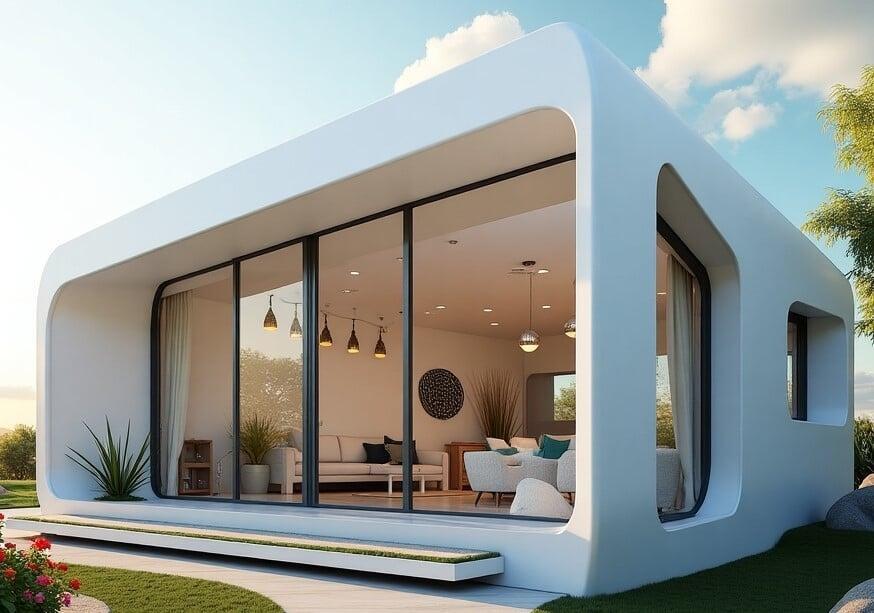
What is an ADU?
An Accessory Dwelling Unit (ADU), also known as a granny flat, in-law suite, or secondary unit, is a small, self-contained living space located on the same lot as a primary residence. In California, ADUs can be detached, attached to the main house, or converted from existing spaces like garages or basements.
In recent years, ADUs have become a key part of the solution to California’s housing crisis, offering affordable, flexible living options and bringing numerous benefits to homeowners, neighborhoods, and the community at large.
Community Benefits of ADUs in California
ADUs are much more than just additional living spaces—they have a profound, positive impact on communities in California. Below are some key ways ADUs benefit neighborhoods, cities, and the broader community:
1. Addressing the Housing Crisis
One of the most significant benefits of ADUs is their role in helping to solve California’s severe housing shortage. By utilizing existing residential properties, ADUs add more units without the need for large-scale new construction projects. This helps provide affordable housing options without sprawling new developments that can strain local resources.
2. Affordable Housing Solutions
ADUs provide an affordable alternative for renters who may not be able to afford high rental rates in traditional apartment complexes. These units can be rented out at lower rates than larger homes or apartments, offering affordable housing options for young professionals, students, or low-income tenants. For homeowners, building an ADU means creating a source of passive income while offering affordable housing to others.
3. Promoting Sustainable Urban Development
ADUs are an excellent way to promote sustainable urban living. By building additional units on existing properties, ADUs reduce the need to build new infrastructure such as roads, utilities, and public services. This encourages smart growth and helps minimize the environmental impact of new development, making ADUs a key component of California’s environmental goals.
4. Supporting Multigenerational Living
ADUs make it easier for families to accommodate multigenerational living. Whether it’s providing housing for aging parents, young adults, or extended family, ADUs allow people to live close together while maintaining independence and privacy. This helps strengthen family bonds and supports caregivers who may be looking after elderly relatives.
5. Boosting Local Economies
ADUs not only provide affordable housing but can also stimulate the local economy. When homeowners build ADUs, they often hire contractors, architects, and designers, which creates jobs in the local construction industry. Furthermore, renters living in ADUs spend money on local goods and services, supporting nearby businesses and further driving economic growth.
6. Increasing Property Values
Building an ADU can increase the value of the property itself. Because of their flexibility and the demand for affordable housing, homes with ADUs tend to be more attractive to buyers, especially in high-demand areas. Homeowners who add ADUs can often recoup their investment and more when selling their homes.
7. Enhancing Community Diversity
ADUs promote community diversity by making it easier for people from various socio-economic backgrounds to live in neighborhoods that were once exclusive or unaffordable. This can help create more inclusive, vibrant communities that reflect the true diversity of California.
Benefits of Building a Permitted ADU
While ADUs offer many advantages, building a permitted ADU (one that follows local zoning and construction codes) comes with additional perks:
| Benefit | Description |
|---|---|
| ✅ Legal Compliance | Avoid legal issues, fines, or demolition by adhering to building codes and zoning laws. |
| 🏠 Increased Property Value | A permitted ADU can raise the resale value of your home significantly. |
| 📈 Rentability | Renting a legal ADU ensures a steady income stream without the risk of eviction or fines. |
| 🛠️ Access to Incentives | Many cities offer financial incentives or fee waivers for legally built ADUs. |
| 🌿 Sustainable Development | Permitted ADUs contribute to sustainable, low-impact urban growth. |
| 🚶♂️ Neighborhood Stability | Legal ADUs contribute to neighborhood stability by ensuring well-regulated, high-quality construction. |
Building a permitted ADU ensures that the unit is up to code, safe, and will not face demolition down the road. It also benefits the community by maintaining the integrity and aesthetics of neighborhoods.

